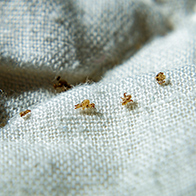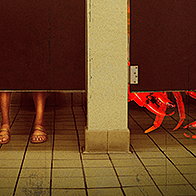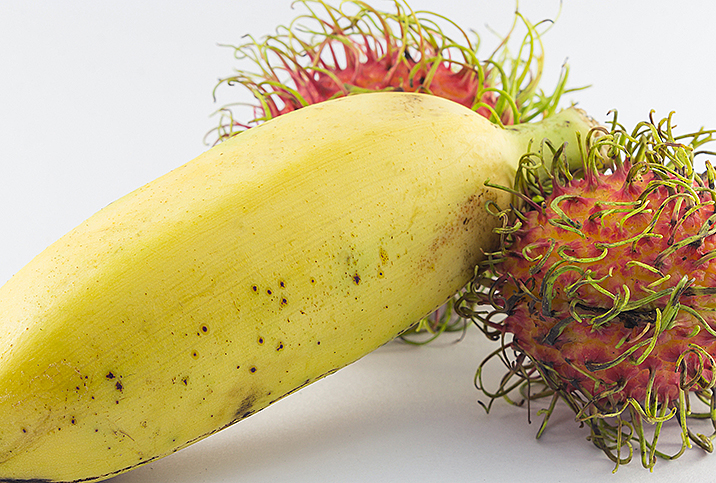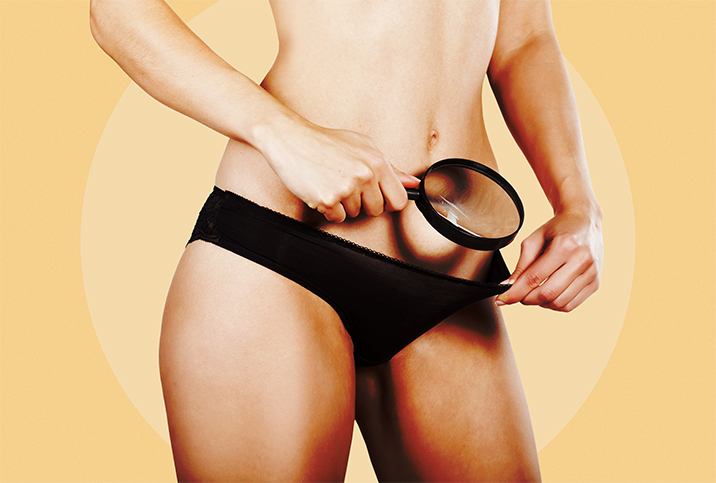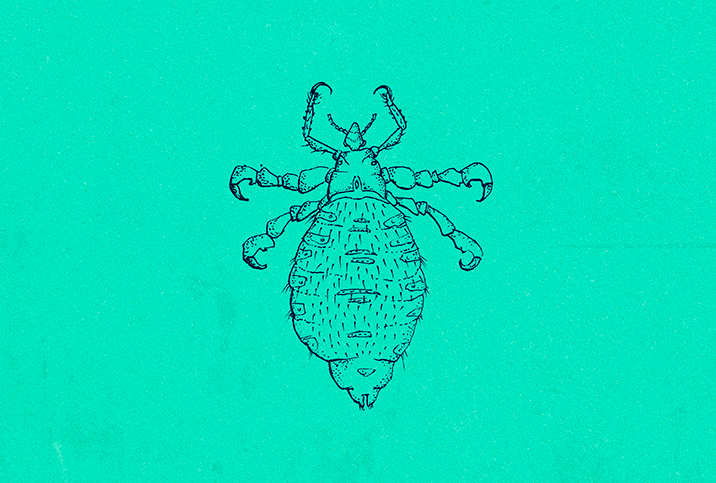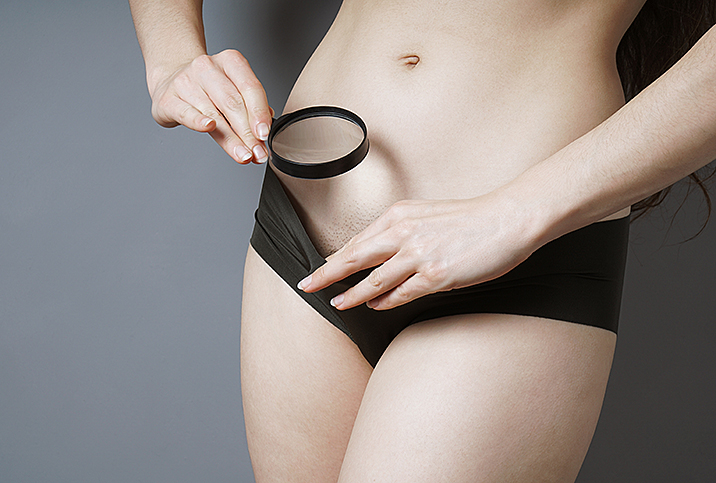Tales From the Burning Bush: What to Do About Pubic Lice Symptoms
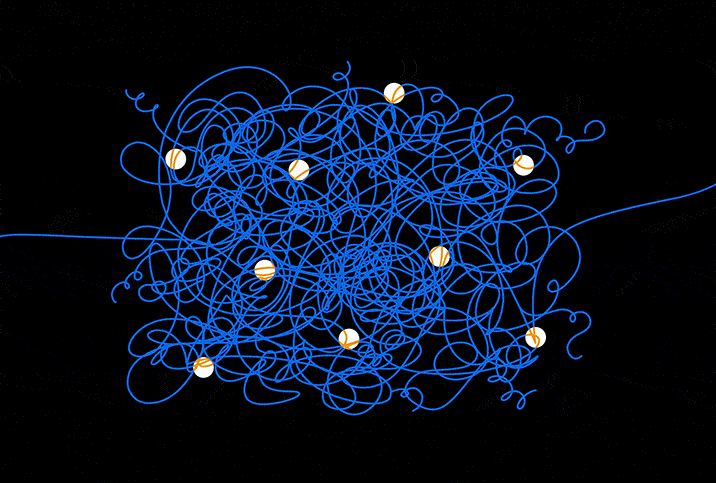
Pubic lice are a sensitive subject, especially if you've succumbed to the inevitable scratching.
You're probably familiar with pubic lice by the nickname "crabs," named for their two frontmost legs, which resemble pinchers. They're not identical to their cousins up north—the head louse, Pediculus humanus capitis—but Edwina Caito, a sexual educator based in Indiana, clarified that both species operate in a similar way.
"Pubic lice subsist on human blood, drawn from the little bites they leave on the skin," she said. "Similar to mosquitoes and other biting and chewing lice, their saliva contains a toxin that causes an allergic reaction which, in turn, causes severe itching."
Pubic lice progress through three life stages rapidly. The eggs (known as nits) are yellow-white ovals latched tightly to the shaft of a single hair strand and almost invisible to the naked eye. After six to 10 days, the nit hatches into a sexually immature nymph resembling the adult louse in all ways except size. For the next two to three weeks, the juvenile feeds on blood and grows until it is grayish-white and 2 millimeters long.
Not just in your pubes
The name "pubic lice" is a bit hyper-specific. The bug may migrate to other coarse body hair, which means shaving downstairs isn't a sufficient treatment and other areas of your body may be vulnerable.
"These little crab-shaped lice will latch on to any coarse hair on the body, like the hair on legs and underarms as well as on the arms," Caito explained. "They will also set up camp in the eyebrows, mustache and beard. They don't make themselves at home on the head as the scalp is too difficult for them to feed on."
It's worth noting coarse hair isn't required for a pubic lice habitat. Even the fine hairs of your eyelashes can provide a home.
Finding lice in your pubic hair is the surest confirmation you have a problem. But if you're looking for evidence that pubic lice might have made you a target, look for these three possible signs: the eggs, the feces and their bites.
- Eggs, whether hatched or not, are similar in size, shape and coloration to sesame seeds.
- Pubic lice of any age leave behind droppings, typically red or brown in color, resembling sand. Unusual spotting in your underwear is also an indication of their presence.
- Bite marks can be identified as blue or red markings on the skin.
Treatment and hygiene
Caito explained the presence of pubic lice has less to do with an individual's hygiene and more to do with their surroundings.
"The environments which are more prone to infestations are shared sleeping spaces, like camps, detention facilities, hotels and motels that don't wash bedding properly or at all, as well as gyms and public dressing rooms where you may try on clothing such as underwear or bathing suits, although any clothing that touches body hair can transfer pubic lice," she said. "Pubic lice cannot be transferred by any smooth surfaces, like toilet seats, benches and upholstered furniture, as they're not capable of holding on to smooth surfaces."
Sara Twogood, M.D., an OB-GYN who practices in the Cedars-Sinai healthcare system in Los Angeles, discussed a few popular theories concerning pubic lice.
"The rate of pubic lice infections has gone down over time, and one theory is the increasing popularity of pubic hair removal," she said. "There are no studies I know of regarding lubrication and pubic lice spread. Sex toys could theoretically contain pubic lice but they wouldn't survive long."
While fuzzy handcuffs might warrant inspection, pubic lice couldn't possibly subsist on a synthetic or natural material with no blood supply. Unfortunately, no current sexual lubricants double as preventive insecticides, and while petroleum jelly may remove nits, it won't kill them.
Caito explained that while treatment is easily obtained, the medicine required is specific.
"Bug spray will not prevent an infestation of pubic lice, so dousing your private parts in Off! won't protect you at all," she advised. "Pubic lice can be exterminated from the body with lice treatments available over the counter: shampoos and lotions. Removing lice from bedding, clothing and infested towels is accomplished by washing those items in very hot water and drying them on high heat. For items that can't be laundered [at home], you can send them to the dry cleaner or place them in a sealed, plastic bag for two weeks."
Sometimes medications kill pubic lice but fail to remove their remains. Twogood added that although you ultimately will be successful, your first attempt to rid yourself of the insects may not be.
"After treatment, patients should be evaluated about 10 days later and avoid sexual activity during that time and until they are cleared," she said. "Often, a second treatment is necessary."
The good news about having pubic lice is that aside from a possible allergic reaction to their saliva, the bugs and their scalp-dwelling cousins don't transmit diseases. Although most people become infected with pubic lice during sex, this occurrence is not technically a sexually transmitted infection (STI).
Tell your healthcare provider if you have an overwhelming urge to itch down there. Meantime, studiously wash your hands and take particular care to scrub your nails to prevent the transfer of bacteria.







